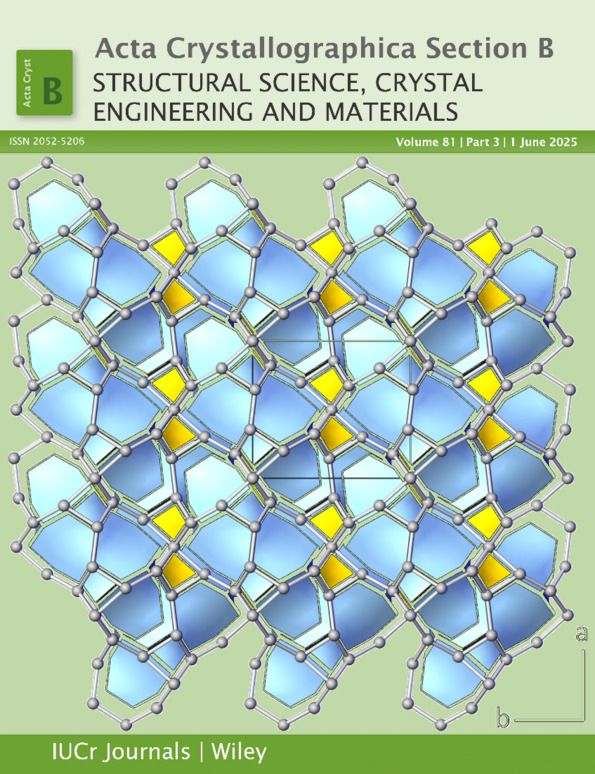Shifting and tilting towards enhanced piezoelectricity in high-temperature ceramics: an average structure study of (1−x)BiFe2/8Ti3/8Mg3/8O3–xPbTiO3 through X-ray and neutron diffraction
Abstract
A comprehensive report is provided of the average structure of a high Curie temperature ferroelectric ceramic, (1−x)BiFe2/8Ti3/8Mg3/8O3–xPbTiO3 (BFTM–xPT) when x = 0.25–0.375 at room temperature. Both neutron and synchrotron X-ray powder diffraction data were collected and combined Rietveld refinements were completed. These data revealed that, of the compositions studied, BFTM–xPT crystallizes as mixed phase material. At x = 0.25–0.275, the average structure of each phase is best described by space groups R3c and Cc. At 0.30 ≥ x ≥ 0.35, a morphotropic phase boundary is present and is best modelled by space groups P4mm and Cc, where space group Cc is the dominant phase. As the concentration of PbTiO3 increases, the amount of octahedral tilting decreases and x = 0.375 exhibits a loss of octahedral tilting and crystallizes in space groups P4mm and Cm. An updated phase diagram at room temperature of this novel system is given and structural intricacies responsible for its piezoelectric properties are revealed.




